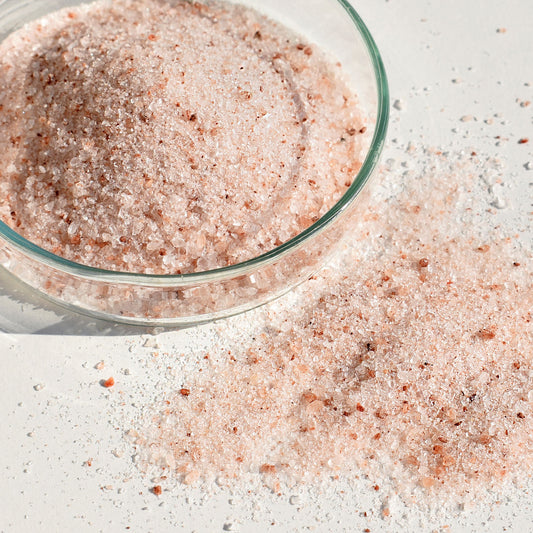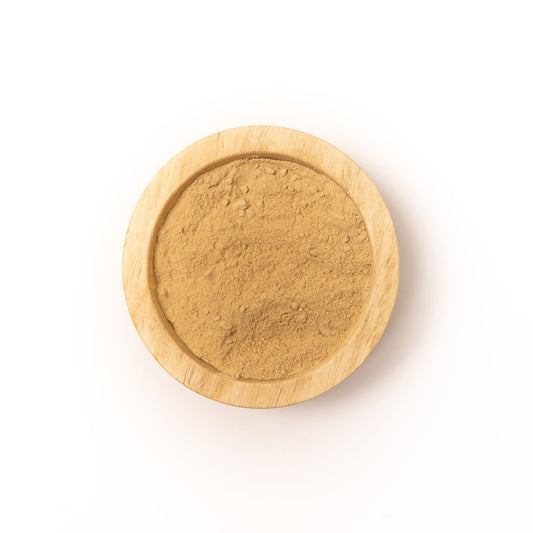Before you know it, another new year will be upon us. Practically synonymous with “New Year's” is the term “resolutions.” As health-conscious individuals, our resolutions are typically regarding our well-being.
But even with the best of intentions, we may not follow through with our resolutions. This is often because we try and do everything at once. We get overwhelmed by the process and then drop everything, thinking that we have set out to accomplish the impossible. And we promise ourselves, “Next year!”
Instead of trying to do it all at once, here is a step-by-step guide for the new year. Take one resolution and practice it for one month. Then move on to the next one the following month, while still incorporating the previous months' practices.
It's helpful to think of Ayurveda as a lifestyle rather than something else that you have to fit into your schedule. The more that you can incorporate Ayurvedic principles into your life, the easier it will be to stay on the road to well-being.
1. Learn your Ayurvedic constitution.
This includes your prakriti (your inborn constitution) and your vikriti (your current imbalance). If you aren't sure of your constitution, take our Ayurvedic Profile™ dosha quiz. The better you understand your doshic imbalance, the more capable you will be of staying on track. Prakriti is your ideal baseline that you need to re-establish. This goal is within reach, as it's already a part of you. Learn to identify foods, behaviors, and environments as vata, pitta, or kapha. Also pay attention to their corresponding gunas or qualities (hot, cold, sharp, mobile, heavy, etc.). Once you have a handle on your vikriti, have a better understanding of how the substances you ingest, as well as the actions you take, contribute to your state of balance or imbalance.
2. Start eating a doshic diet.
Once you know your prakriti and vikriti, you are ready to make some dietary changes, which includes introducing foods to favor and eliminating foods to avoid. Study the list that relates to you, and see which foods and food qualities you require to bring yourself back into balance. Rather than trying to change your diet all at once, start with food categories, and work with them, one food group at a time (e.g., fruits/vegetables, grains), until you have consciously changed your dietary habits. Start paying attention to your body and how it reacts when you eat vikriti-balancing foods, as well as dosha-destabilizing foods. Eventually, this will become second nature, and your body will guide you towards its preferences.

3. Start cooking more!
After you learn which foods are best for your vikriti, you can be an active participant in your healing. Resolve to cook at least one more meal per week than you regularly do. Invest in a cooking class with an Ayurvedic practitioner, or at least purchase an Ayurvedic cookbook. You need not be a master chef to start experimenting with different dishes. Not only will you save money, but you will also be able to prepare food that is fresh, nourishing, and prepared to your own dietary liking.
4. Focus on your digestion.
Ayurveda teaches us that if we have strong agni, we are most likely free from many diseases, thus agni, or the digestive fire, is very important. Ayurveda teaches us that if we have strong agni, we are most likely free from many diseases. Since water puts out fires, you do not want to drink too much before, during, or after your meals. You may wish to have a cup of cumin, coriander, and fennel tea (which supports digestion) with your meals. One way to kindle agni is to have a small slice of fresh ginger with a little bit of mineral salt and a squeeze of fresh lime before you eat. Pay attention to your food when eating. Set tasks aside. Take digestive herbs to help you with gas, bloating, or heartburn.
5. Spice up your life.
Not only do Indian spices have delicious aromatic flavors, but they also enhance your digestion. Make your veggies, soups, and lentils more exciting and digestible by adding spices such as turmeric, fennel, ginger, cumin, clove, and coriander. Cinnamon, nutmeg, and cardamom are also great for your oatmeal and desserts. Choose spices according to their impact on your doshas. Are they warming spices or cooling? Are they pungent or more astringent? Sweet or bitter? Your taste buds, and your body, will thank you for the delectable journey!
6. Get moving!
Incorporate exercises that are recommended for your doshic imbalance.
a. Vata loves to do aerobic, fast paced exercises such as running, but what it really needs is activities that are balanced and grounding. Restorative yoga and leisurely walks can help stabilize vata dosha.
b. Pitta strives to excel and be perfect at everything, including athletics. Pitta people would do well to engage in sports without keeping score. And they must be careful not to exercise around noon, when the sun is at its highest peak. Hot yoga should be avoided, but swimming and dancing are great exercises for pitta folks.
c. It can be difficult to motivate kapha to get off the couch. They require cardio exercises to raise their heart rate and promote perspiration. Since kapha thrives on routine, it's beneficial to enroll in weekly classes. Each doshic type can do yoga for their constitution.
7. Do a seasonal cleanse.
Seasonal junctures are times of both inner and outer transitions. Your body has to adapt to the changes in weather and temperature. Prepare your internal environment by doing a week-long panchakarma under the guidance of an Ayurvedic practitioner, if possible. Otherwise, do a mini-panchakarma at home. Give yourself an oil massage daily with the proper oil. Use nasya drops to lubricate the nasal passages. Eat a simple diet of basmati rice, dal, or kitchari, and mildly spiced cooked veggies. Drink cumin, coriander, and fennel tea. Do restorative yoga. Meditate and journal. Take triphala or psyllium husk (sat isabgol) at night. Minimize your time spent with electronic devices. Practice silence to the greatest extent possible.
8. Pay attention to health concerns as they arise.
It's easy to get motivated once a major health challenge arises. Ayurveda talks about the disease process (samprapti) in terms of a leaky faucet. We often ignore a small drip, but when that water collects and spreads to another area, we must do a quick repair. By that time, it has created a greater problem for your environment. Similarly, it's important to pay attention to aches, pains, stiffness, irritations, inflammations, skin disruptions, muscle weakness, and so forth, rather than wait until they become more problematic. Engage in self-care and meet with your Ayurvedic practitioner, massage therapist, reflexologist, or health care provider. It's a lot easier to nip something in the bud than to expend your time and energy managing a full-blown illness.

9. Improve your sleeping habits.
Insomnia is a very common problem. Many people have a hard time falling asleep or staying asleep. Start by going to bed by 10 p.m. and setting a regular time to sleep and arise. Keep electronics out of the bedroom. Turn off the computer for at least one hour before sleep. Take a warm bath with Epsom salts. Drink a warm glass of milk or almond milk before bedtime, spiced with nutmeg, turmeric, and cardamom. Do not sleep with your head near a lot of plugs. Charge your phone and other devices in another room. Make sure that blinds are properly closed. Apply some Brahmi or Bhringaraj Oil to the soles of your feet and your head. Practice Savasana (Corpse Pose) while lying in your bed.
10. Spend time in self-reflection.
In our fast-paced, multi-sensory lives, we neglect to take time to feed our souls. One way to rejuvenate your body and mind is to practice meditation. Just close your eyes and focus on your breath or repeat a mantra. If thoughts come, let them pass and return to your breath. As you make this a regular practice, see what insights arise. You may wish to journal following your meditation. Alternately, you may choose to read a spiritual, inspirational, or scriptural text. Even a few minutes of quiet time in the morning can make a dramatic impact on the rest of your day.
11. Honor the natural rhythms of nature.
Your body has its own intelligence, and, if you align with it, it will guide you to greater health and vitality. Wake up with the sun and go to bed by 10 p.m. Eat seasonal fruits and vegetables. Eat lunch around noon, when the sun is highest, and perhaps make this your heaviest meal. Eat lightly eat a heavy meal after sunset. Eat meals at regular intervals. Eat cooler foods in the summer and warmer foods in the fall and winter. Allow natural urges. Encourage your body to adapt to a healthy daily schedule. Follow your own bodily cycles and don't be swayed by dietary or health fads.
12. Do all things in moderation.
Ayurveda is an incremental science. Everything you do adds up. Even if you are not diligent in your daily practices or fastidious with your diet, that does not mean that you will immediately fall out of balance. Be gentle with vata's anxiety, pitta's perfection, and kapha's inertia. Set moderate, short-term goals. Enjoy your life and practice self-compassion. Do your best and be mindful. Keep your long-term goals in view and believe that you will reach them, step by dosha-balancing step.












